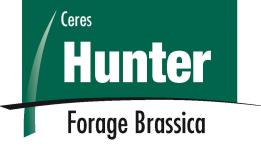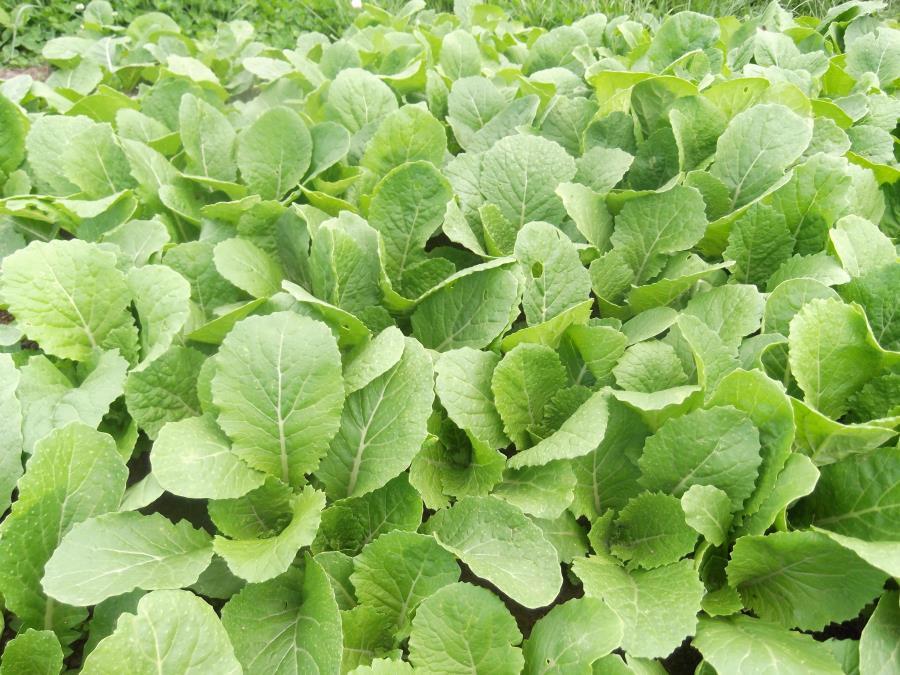Hunter
QUALITY FORAGE FOR FINISHING ANIMALS.

- Sowing Rate 4 kg/HA
- Grazing Seasons Autumn, Summer
- Time To First Grazing 6-8 weeks
- Period Of Grazing 3-4 grazings
Hunter forage brassica is an intra-specific hybrid developed by crossing turnips with related Asiatic leaf vegetables of the same species. The result is a quick growing, leafy turnip, which has minimal bulb development, and is best suited to multiple grazings for summer and early-autumn feed requirements. Hunter is a fast-maturing forage brassica with first grazing possible at 6-8 weeks. It is an excellent quality forage capable of providing extremely high live weight gains on growing animals. Hunter was bred for tolerance to turnip mosaic virus and cauliflower mosaic virus. This, combined with selecting for vigorous regrowth, has produced a variety with fast recovery from grazing and excellent ability to yield in the second, third and sometimes fourth regrowth cycle.
Plants usually show good resistance to most club root races, but they are susceptible to drought and aphids, and are best suited to heavier soil conditions with periodic summer moisture or irrigation.
Key Features
- Early-maturing (6-8 weeks), with minimal ripening required
- Excellent quality forage for finishing animals through the summer months
- Fast recovery from grazing, with excellent subsequent yields
- Strong plant survival through multiple grazing

Sowing & Establishment
| Suggested Sowing Time | Mid October to November | February possible |
|---|---|---|
| Suggested Sowing Rate (kg/ha) | 4 | 4 |
| Time to First Grazing | 6-8 weeks | 8-10 weeks |
| Number of Potential Grazings | 3-4 | 2-3 |
| Potential Yield (t DM/ha) | 10-12* | 10-12* |
*Depending on number of grazings
- Early-maturing from spring sowing, 6-8 weeks with minimal ripening requirement
- Excellent quality forage for finishing animals through the summer months
- Fast recovery from grazing with excellent subsequent yields
- Strong plant survival from multiple-grazings
- Sowing Rate 4 kg/HA, 4
Performance Data
Optimising return from Hunter
Hunter has become a common feed source for finishing lambs. It is common to set stock lambs on the crop and draft them off as they reach target weights. An experiment at Ceres Research Centre suggests it is unlikely this grazing management makes the most efficient use of the Hunter crop.
The experiment investigated the effect of daily allowance on the production of live weight per hectare in a rotationally-grazed Hunter finishing system, with the view of determining optimum grazing parameters.
At allowances of 1 kgDM/hd/day, or less where grazing residual was low, the crop produced little regrowth, lamb growth rates were poor (25-75 g/day) and production per hectare was not maximised (2-5 kgLWG/ha/day), see Figure 3.
At generous allowances (3.5 kgDM/hd/day) where grazing residual was high (3000 kgDM/ha) and where lamb growth rates were high (300 g/day), per hectare production was still not maximised (7 kgLWG/ha/day) because of low stocking rates.In this experiment, per hectare productivity was maximised (12 kgLWG/ha/day) at an allowance of 2.0-2.5 kgDM/hd/day where lambs grew at 300 g/day.
The key message from this work was that in rotationally grazed Hunter systems shifted on a weekly basis, maximum per hectare production was achieved on a daily allowance of 2.0-2.5 kgDM/hd/day.

